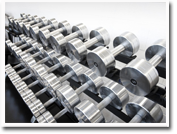How does BioRhythm honor the men and women of the military? By introducing Pre-Glow to give them the extra edge!
BioRhythm is on the cutting edge of the pre-workout market! Pre-Glow is not just designed for the avid lifter who wants a pre workout just for energy. Heck, we can drink a cup of coffee for that! Pre-Glow is for anyone who is looking for a pre-workout that increases muscular endurance, strength, stamina, and sets the stage for growth! Isn’t that what a pre-workout should be?
Getting back to the military- beta alanine is one of the active ingredients in the “Peak Performance Stack,” in Pre-Glow. Just to give you some background on Beta Alanine, it’s a naturally occurring beta amino acid. Beta Alanine is the rate limiting precursor of carnosine. Supplementation of Beta Alanine has been shown to decrease fatigue and improve total muscle output.
So what the Journal of the International Society of Sports Nutrition studied was the tactical performance of soldiers using Beta Alanine. In 2014 20 soldiers were assigned to a Beta Alanine (BA) group or a placebo group (PL). All participants performed a 4-km run, 5-countermovement jumps using a linear position transducer, 120-m sprint, a 10-shot shooting protocol with assault rifle, as well as a few other tests.
The Results speak for themselves:
– Peak jump power at Post was greater for BA than PL (p = 0.034)
– Mean jump power for BA at Post was 10.2% greater (p = 0.139) than PL.
– BA had a significantly greater (p = 0.012) number of shots on target at Post (8.2 ± 1.0) than PL (6.5 ± 2.1), and their target engagement speed at Post was also significantly faster (p = 0.039).
Pre-Glow won’t turn you into the next Rambo, but it’s a step to becoming a better You!
Reference:
Hoffman JR, Landau G, Stout JR, Dabora M, Moran DS, Sharvit N, Hoffman NW, Ben Moshe Y, McCormack WP, Hirschhorn G, Ostfeld I.
β-alanine supplementation improves tactical performance but not cognitive function in combat soldiers
J Int Soc Sports Nutr. 2014 Apr 10;11(1):15



